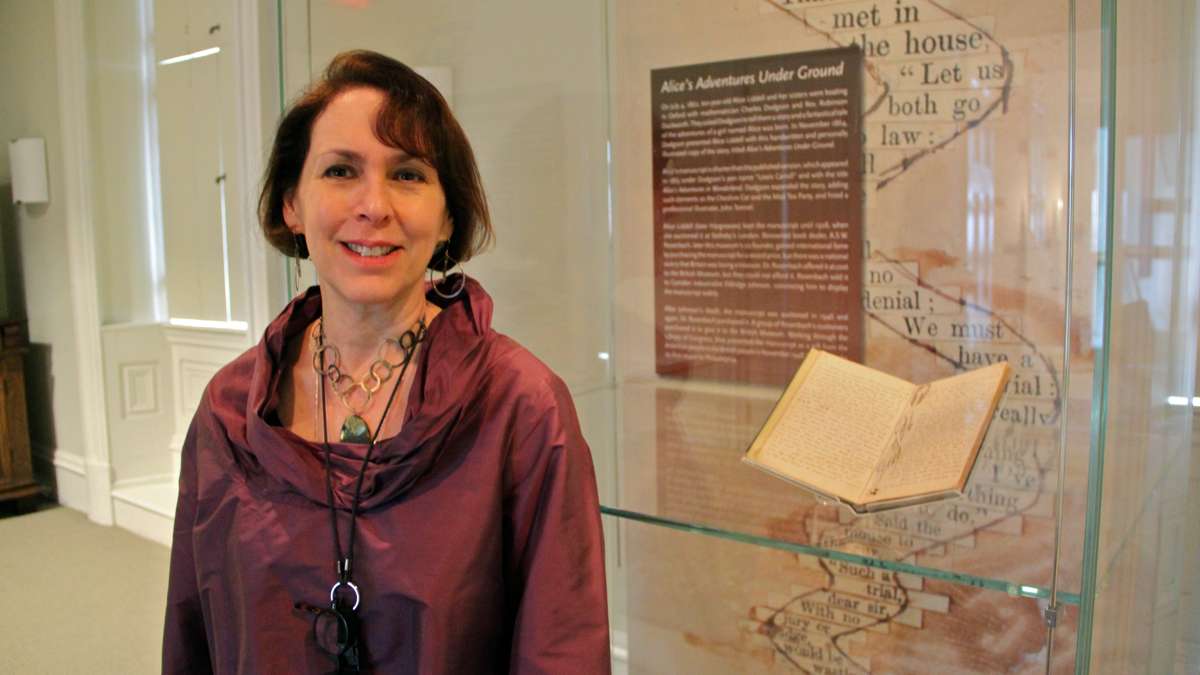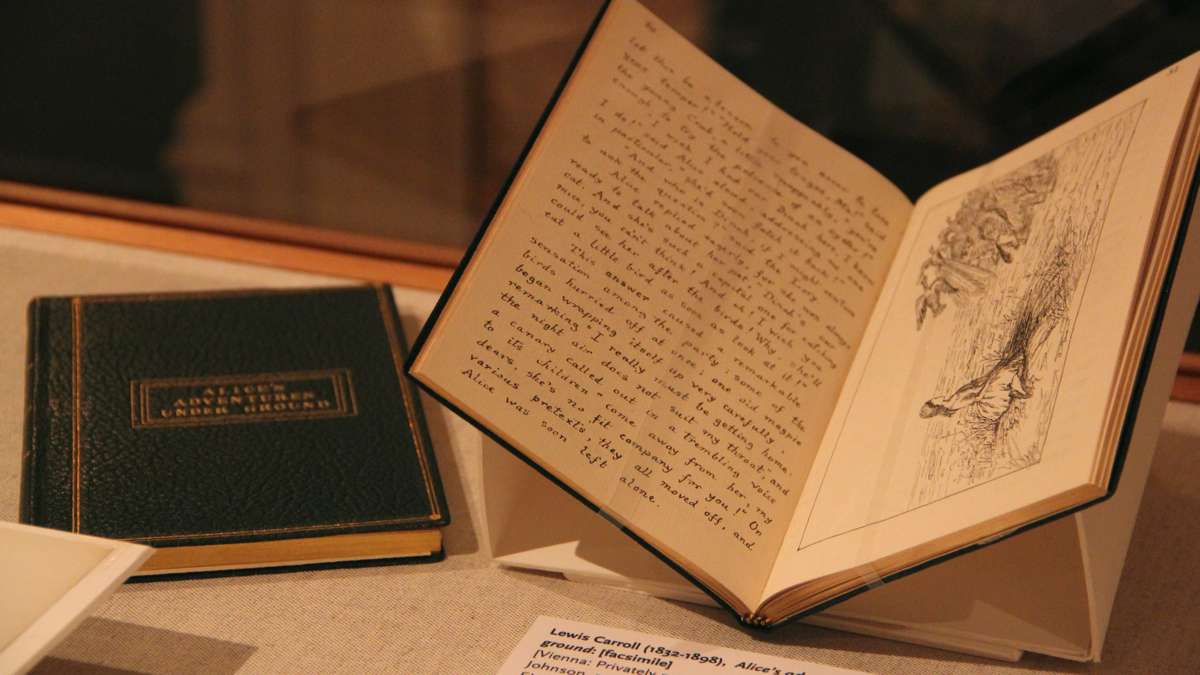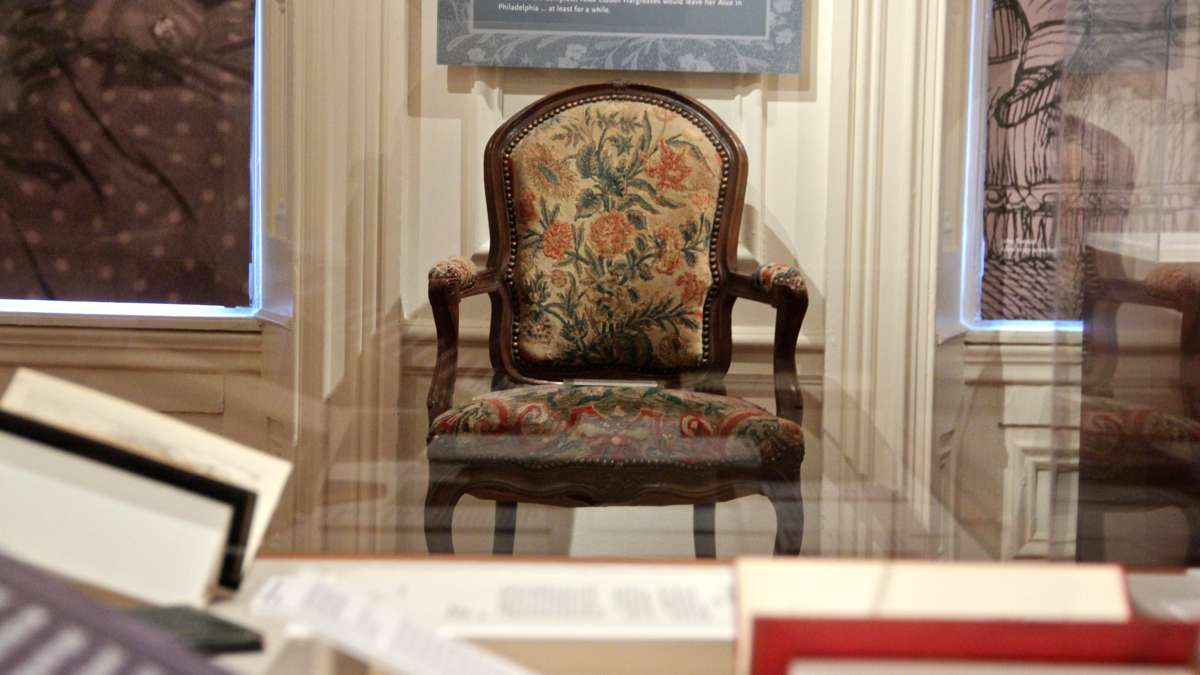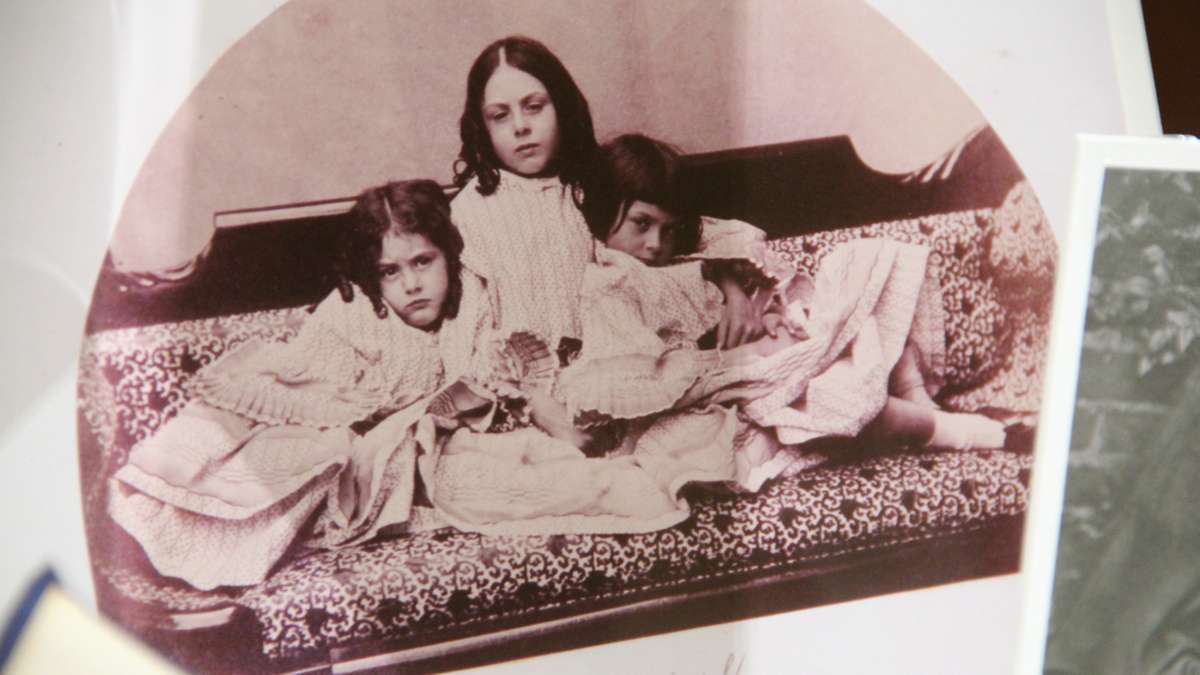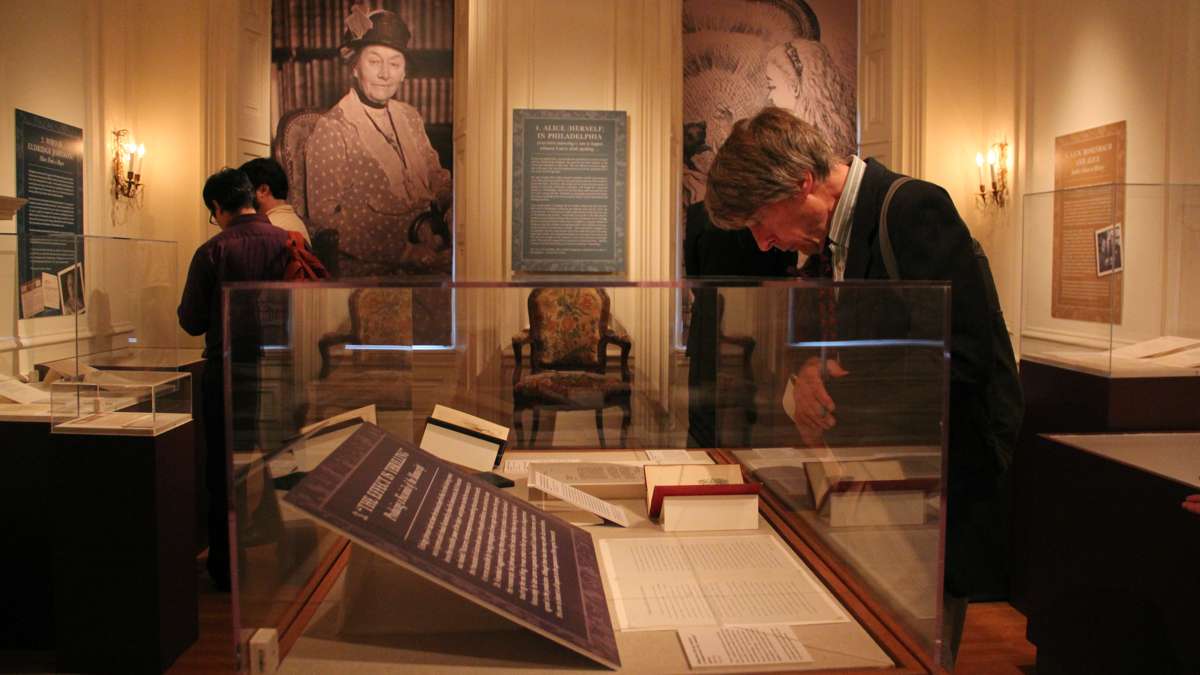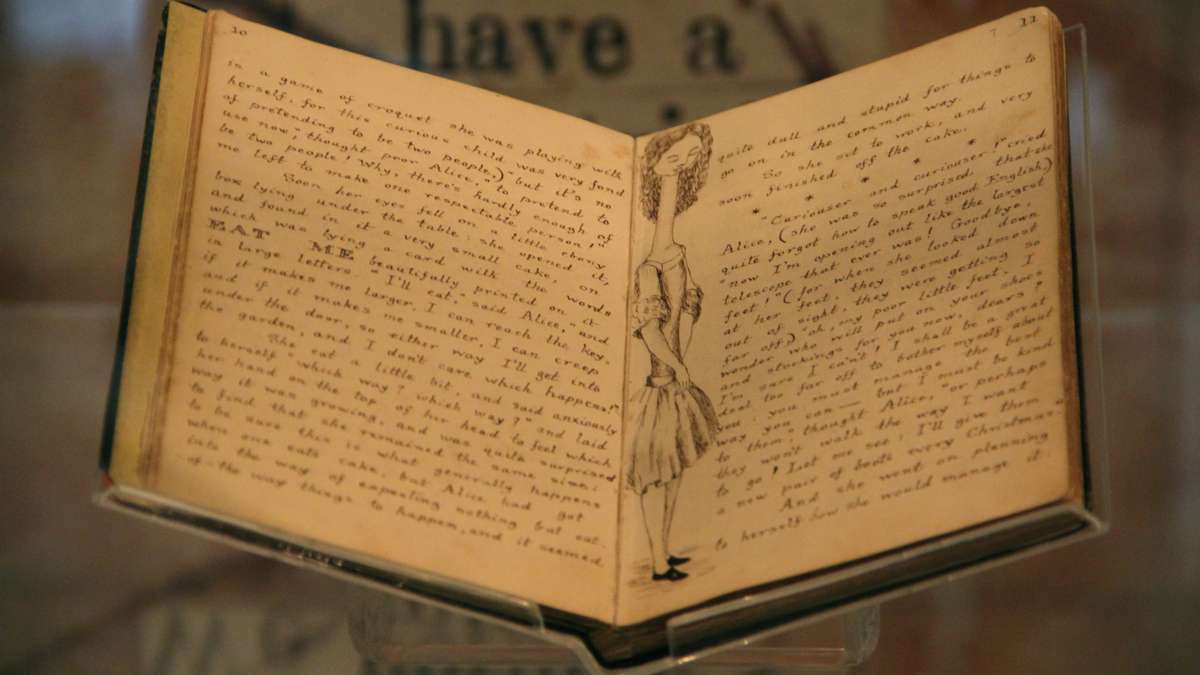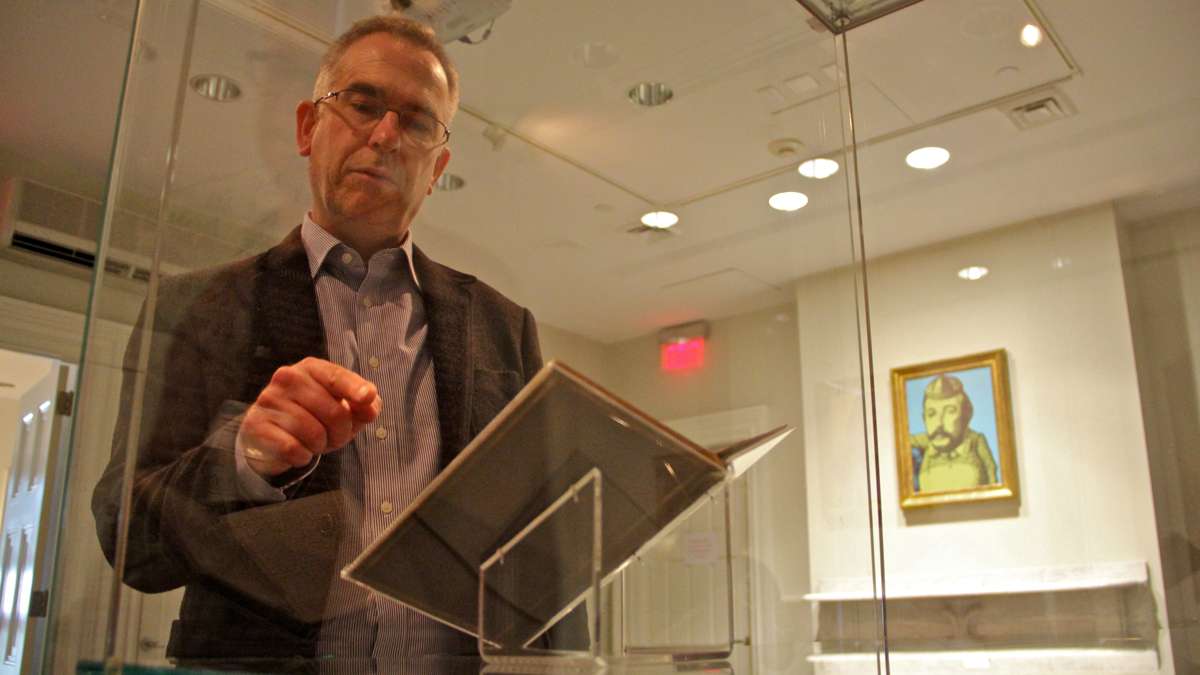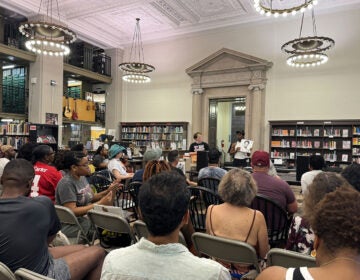Rosenbach begins at the beginning with ‘Alice’ exhibit featuring original manuscript
The original, handwritten manuscript of “Alice’s Adventures in Wonderland” was never intended to be seen by an editor or a typesetter.
Lewis Carroll (aka Charles Dodgson) wrote it as a gift for Alice Liddell, the little girl with whom he once spent an afternoon telling a silly story about falling down a rabbit hole.
Carroll captured the whimsy of that hot afternoon with sentences that swirl around the page in the shape of a mouse “tale,” and whimsical sketches.
“They have a great sense of immediacy,” said Judith Guston, curator at the Rosenbach Museum and Library, who put together “Down the Rabbit Hole: 150 Years of Alice in Wonderland.” “The rabbit is really rabbity. The girl is really girlish. It’s charming beyond belief.”
Carroll even altered his natural penmanship for the sake of young Alice. His manuscript is not written in the cursive hand he used for correspondence, rather in clearly blocked letters to be more easily read by a child.
The manuscript is a peek into a private joke. It is also clearly composed, with no scratch-outs or errors, and text blocks precisely laid out to accommodate his illustrations.
“It epitomizes the dual track Carroll was working on,” said Scot McKendrick, head of Western collections at the British Library, the owner of the manuscript. “You have this very private gift to the person that inspired it, and this growing concept that he wants to publish this and therefore adapt it. There are a lot more personal references to this copy than the later, public version.”
The book is the temporary centerpiece of the Rosenbach exhibition celebrating the manuscript’s 150th birthday. In 1928, the rare book dealer Dr. M. A. Rosenbach bought the manuscript directly from Liddell, the little girl who grew up to be an elderly widow in a sprawling estate in southern England. She needed the money to maintain her lifestyle.
Rosenbach paid 15,000 pounds for the manuscript at auction, the most for a literary manuscript at the time. The sale made headlines around the world. Even in obituaries years later, Rosenbach became known as the man who bought Alice.
“Here comes this — I hate to say it — portly little Philadelphian over to London to buy their national treasure,” said Guston. “It’s shocking that he could pay more than the British Museum could afford to pay.”
Rosenbach immediately sold it to collector Eldridge Johnson of Camden, New Jersey, co-founder of Victor records. According to the letters on display at the Rosenbach, Johnson was upset by how much time the manuscript spent on the road, on exhibition. He wanted his treasure close to him at home.
Rosenbach would buy it back again almost two decades later, ultimately gifting it to the British Library. It now lives in the same space as the Gutenberg Bible, Handel’s “Messiah” score and the Magna Carta.
“For some reason, as soon as you hold it, touch it, start reading it, you becoming something of it,” said Guston. “Dr. Rosenbach felt it, Johnson felt it as soon as he held it in his hands, and Alice — although when she was elderly felt she had to give it up — really couldn’t wait to see it again.”
The chair Alice sat in when she held her book for the last time in Philadelphia is part of the exhibition. The manuscript goes home to England on Sunday. The rest of the exhibition remains until next May.
WHYY is your source for fact-based, in-depth journalism and information. As a nonprofit organization, we rely on financial support from readers like you. Please give today.



